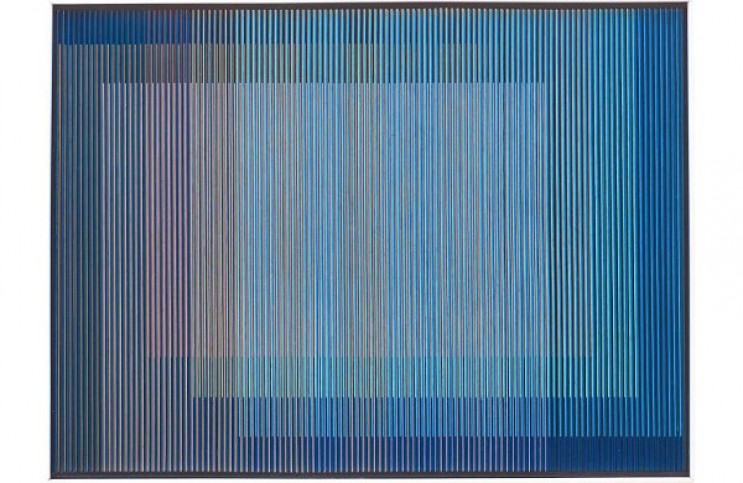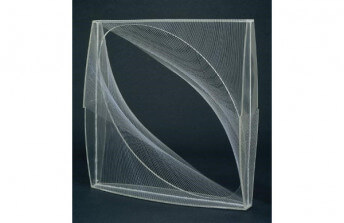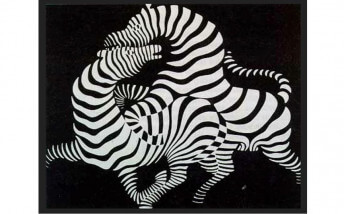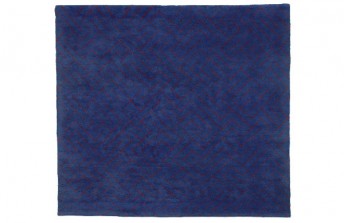Carlos Cruz-Diez - The Star of Phillips’ Summer Exhibition
Jul 9, 2018
Carlos Cruz-Diez is easily one of the most intriguing artists in the world today. For seven decades, he has been fascinating eyes and blowing minds with his optical and kinetic artworks, which expand the limits of visual perception to the point that viewers frequently lose track of what is real and what is illusion. This summer, Diez breaks new ground yet again as the first artist to headline PhillipsX, an innovative new art exhibition and selling platform being rolled out by Phillips auction house. Carlos Cruz-Diez: Luminous Reality is a new type of “selling exhibition.” Filling the London galleries of Phillips, it will feature a selection works by Diez spanning from the 1950s to the present day. It includes secondary market work alongside new and never-before-seen works. To those familiar with the usual auction house model, it is that mix that is raising eyebrows. Traditionally, a selling exhibition at an auction house mimics a gallery exhibition in that works are displayed in such a way that viewers can experience them up close and personally, like at a museum. But the works are not usually new to the market. Auction houses usually sell works that have already been in the collections of individuals or institutions, they do not directly manage the careers of artists. By blending primary and secondary market works, this exhibition crosses into territory normally occupied by traditional dealers. The auction house is adding a fiduciary responsibility directly to the artist. This subtle change means Phillips is seizing fresh ground, and raising questions about what might differentiate auction houses and galleries in the future.
Phillip-ing the Script
Before we give too much credit to Phillips for flipping the auction house script, we should remember that their idea to sell new works directly to the public through an auction house is not completely new. The most high profile example of this kind of thing occurred a decade ago, when Damien Hirst sold his entire new collection of work at Sotheby’s in 2008, bypassing his dealers altogether. That, however, was a publicity stunt as much as anything. Hirst was leveraging his name recognition and star power in an attempt to maximize his prices. However, even if he did not intend to, he also disrupted the sales hierarchy in the art world by proving that buyers would indeed bid against each other for works with no sales history. That helped open the door to the kind of thing Phillips is now doing with this exhibition.
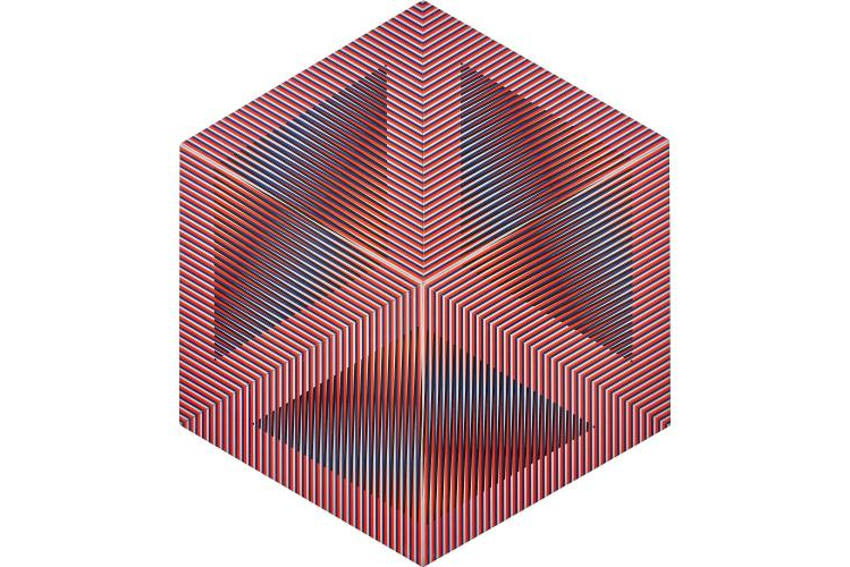
Carlos Cruz-Diez - Color aditivo permutable, 1982. © Carlos Cruz-Diez
Yet this change is also a sort of re-balancing of another trend that has long happened in the gallery world. Contemporary galleries have always occasionally offered secondary market works for sale, usually because a collector has a pre-existing relationship with the gallery and trusts them to get the work into the hands of the right buyer. PhillipsX is a reverse version of this idea—if galleries can sell secondary market works, auction houses should be able to sell primary market works. Yet by choosing Diez as the artist with which to roll out this new concept, Phillips is also declaring that the platform is about more than just good business. It is also about finding new ways for auction houses to connect with an ever-more skeptical and digital-focused audience. Diez makes work that simply must be viewed in person. It makes no sense to buy it from an online catalogue, or even to simply bid on it from a crowded auction floor. Diez makes art for real life, and the only way to get the full effect from it is to experience it up close and in the flesh.
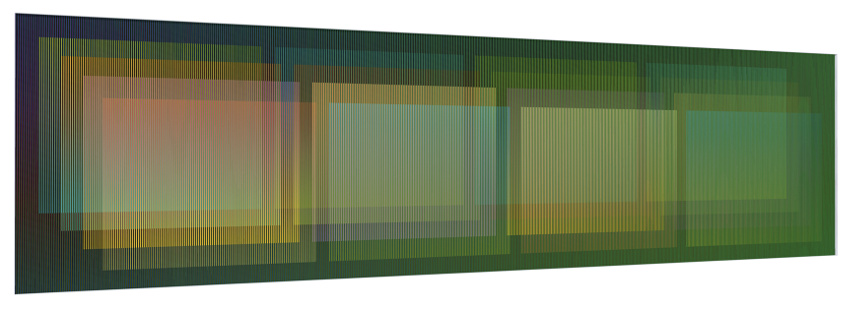
Carlos Cruz-Diez - Physichromie 1725, 2011 © Cruz-Diez, Adagp 2018
A Room With Infinite Views
One of the key works on view in Carlos Cruz-Diez: Luminous Reality is “Environment Chromointerférent” (1974/2018). This piece exemplifies exactly why the PhillipsX platform is more appropriate for showing the work of Diez than a traditional auction would be. Diez began his Chromointerférence series in 1964, after noticing that transparent images placed over other images interacted with light in such a way that the underlying colors changed, revealing new colors “that had no chemical counterpart in the support.” He called this phenomenon a “false prism,” because it showed colors that were not really there. Diez explored Chromointerférence with plastic mediums like sculpture and painting, and then expanded the idea into installation form, creating Chromointerférence Environments. In these environments, colored lights interact in space, causing hues to change before the eye. Seeing a picture of this effect is not enough—the only way to understand is to be inside the “Environment Chromointerférent” along with the light.
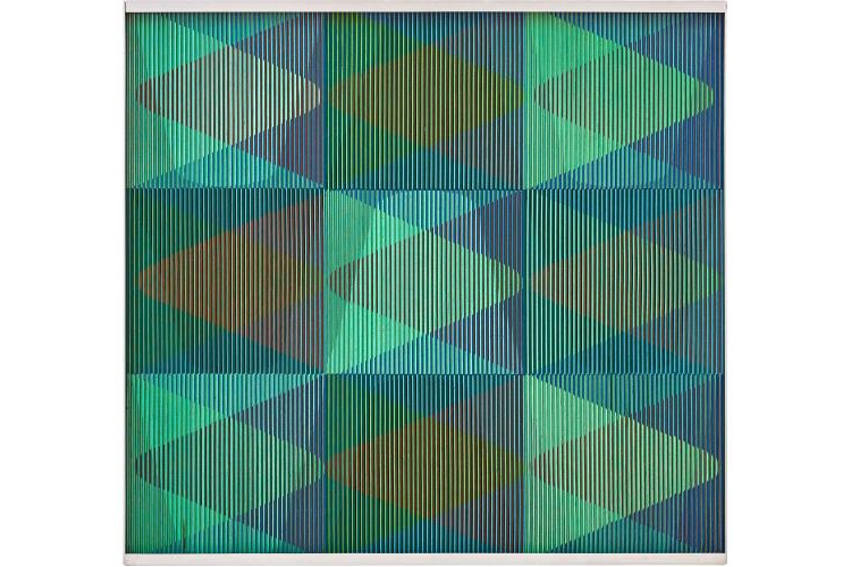
Carlos Cruz-Diez - Physichromie 153, 1965. © Carlos Cruz-Diez
Though not all of the works in this show are as immersive as “Environment Chromointerférent,” even the two-dimensional pieces are evidence of why Diez was a perfect choice for Phillips to kick off their new platform. Even at their simplest, they draw attention to the fact that reality is constantly changing, that what we know is never stabile, and our nature might not be what we think it is. Ontological aspects of the work aside, even something as mundane as the art market is in constant flux, a fact this exhibition perfectly demonstrates. Keep in mind also that even if you have no desire, or means, to buy the works on view in this show, you can still go and see the exhibition. That is the other great thing about the “selling exhibition” platform: the work is free for the public to view. Diez has never wanted his work to only be for those who could afford to own it. Regardless of what your reality is, put yourself in the same space as this work and you will understand that even the most concrete circumstances can change—there is always time. Carlos Cruz-Diez: Luminous Reality is on view from 16 July through 6 September 2018 at 30 Berkeley Square, London.
Featured image: Carlos Cruz-Diez - Physichromie n 480, 1969. © Carlos Cruz-Diez
All images used for illustrative purposes only
By Phillip Barcio
